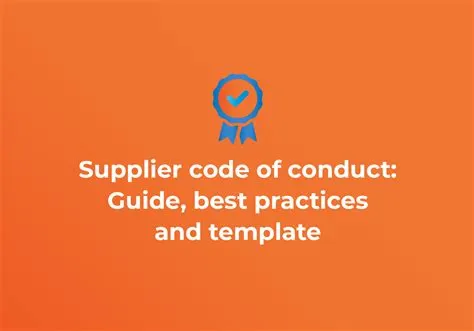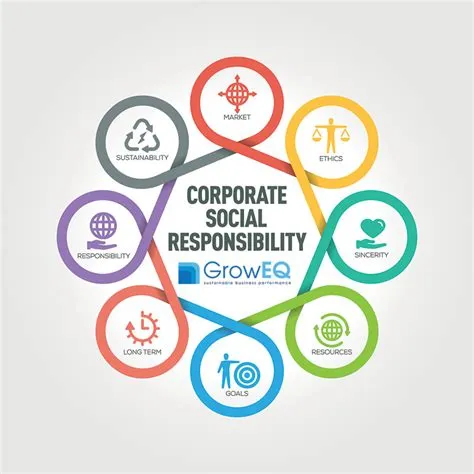Hey there, fellow business enthusiasts! Let’s talk about something super important: building a business that’s not only profitable but also good for the planet and its people. We’re diving into the world of sustainable and ethical business practices, with a special focus on crafting a killer supplier code of conduct. Think of it as your business’s moral compass, guiding your relationships with suppliers and ensuring everyone’s playing fair.
Why should you even bother? Well, aside from the obvious ethical considerations (because, you know, doing the right thing is important!), embracing sustainability and ethical practices can boost your bottom line. Consumers are increasingly conscious of where their products come from and how they’re made. They’re willing to pay more for goods and services from companies that demonstrate a commitment to social and environmental responsibility. Think of it as a powerful marketing tool—a badge of honor that sets you apart from the competition.
So, where do we start building this ethical empire? It all begins with a comprehensive and robust ethical supply chain management strategy, and a rock-solid supplier code of conduct is the cornerstone. This isn’t just a document you throw together; it’s a living, breathing guide that shapes your relationships with suppliers, ensuring they align with your values and your vision for a better world.
Think of your supplier code of conduct as a contract – but instead of just legal obligations, it outlines your shared commitment to sustainability and ethical practices. It dictates expectations regarding labor standards, environmental protection, and business ethics. This means clearly defining what you expect from your suppliers in terms of:
Fair Labor Practices: Are your suppliers paying fair wages, providing safe working conditions, and respecting workers’ rights? Are they avoiding child labor and forced labor? This is non-negotiable. Think about it: would you want your employees treated unfairly? Probably not. The same applies to the people working for your suppliers.
Environmental Stewardship: How are your suppliers impacting the environment? Are they minimizing their carbon footprint, conserving water, and reducing waste? Do they use green technology and innovation to minimize their environmental impact? Are they actively working towards a circular economy, reducing waste and reusing materials? The health of our planet is inextricably linked to the health of our businesses.
Ethical Sourcing: Are your suppliers using ethically sourced materials? Are they transparent about their supply chains, ensuring no questionable practices are involved? Are they adhering to relevant industry ethical certifications? It’s crucial to know where your raw materials come from and ensure no unethical practices like deforestation or conflict minerals are used.
Business Ethics and Compliance: Do your suppliers uphold the highest ethical standards in their operations? Are they compliant with all relevant laws and regulations? Transparency and accountability are key. This covers everything from bribery and corruption to data protection and intellectual property rights.
Crafting a truly effective supplier code of conduct isn’t just about writing a document; it’s about fostering a culture of ethical sourcing throughout your entire supply chain. You need to actively engage with your suppliers, building strong, collaborative relationships based on trust and mutual respect.
Think of it like building a house: you wouldn’t just throw bricks together without a blueprint, right? Your supplier code of conduct is that blueprint. It outlines the foundation upon which you build strong, sustainable relationships with your suppliers.
Implementing Your Supplier Code of Conduct:
Creating a fantastic code of conduct is only half the battle. Effective implementation is key. Here’s how to put your code into action:
Communication is Key: Make sure your suppliers understand the code. Provide training and support to help them comply. Don’t just send it out and hope for the best!
Regular Audits and Monitoring: Regularly audit your suppliers to ensure compliance. This shows you’re serious about your commitments. This is not about punishment, it’s about improvement and collaborative problem-solving.
Transparency and Accountability: Be transparent about your expectations and hold your suppliers accountable for any violations. This reinforces the importance of the code.
Continuous Improvement: The world is constantly changing, so your code needs to adapt. Regularly review and update your code to reflect best practices and new challenges.
Collaboration and Partnerships: Don’t think of your suppliers as just vendors. Work with them to achieve shared goals and find innovative solutions to challenges. Build a collaborative network to foster sustainable practices. Remember, supplier relationships should be built on mutual respect and trust.
Your commitment to sustainable and ethical business practices isn’t just about doing the right thing; it’s a smart business move. It builds brand loyalty, attracts top talent, and can even give you a competitive edge. It’s about embedding corporate social responsibility (CSR) into the fabric of your business, showcasing your commitment to CSR and stakeholder impact. Remember, your actions speak louder than words. By prioritizing sustainable and ethical practices, you’re investing in a brighter future for your business and the world. You can even explore the potential for renewable energy solutions for business to further minimize your environmental impact. And don’t forget about the potential cost savings – implementing sustainable practices often leads to cost and financial impact reductions in the long run. You can even improve CSR and employee engagement by letting your employees know that your company cares about sustainability.
Conclusion:
Building a truly sustainable and ethical business requires a holistic approach. A strong supplier code of conduct is your roadmap, but implementation, communication, and continuous improvement are vital for success. It’s a journey, not a destination, and every step you take towards a more ethical and sustainable future benefits not just your business, but the entire planet.
Frequently Asked Questions
Q1: How do I measure the effectiveness of my supplier code of conduct?
A1: Effectiveness can be measured through several metrics, including supplier compliance rates, reduction in environmental impact (e.g., waste, emissions), improved worker safety records, and increased transparency throughout the supply chain. You can also track customer satisfaction and brand reputation, as these are directly influenced by your ethical practices.
Q2: What happens if a supplier violates my code of conduct?
A2: Your response should be a progressive discipline approach. Start with communication and support to help the supplier understand and rectify the violation. Repeated violations may result in corrective action plans, temporary suspension, or termination of the supplier relationship. Transparency and fairness are crucial throughout this process.
Q3: Is it cost-effective to implement a supplier code of conduct?
A3: While there are upfront costs associated with developing and implementing a code of conduct, the long-term benefits often outweigh the initial investment. These benefits can include reduced risks (legal, reputational), improved brand image, increased customer loyalty, and access to a more sustainable and ethical supply chain. Remember the cost and financial impact of neglecting ethical practices can be far greater.
Q4: How can I involve my employees in the process of creating and implementing a supplier code of conduct?
A4: Employee engagement is essential. Create internal working groups, surveys, or workshops to gather input and feedback. Training your employees on the code and its importance helps ensure that ethical practices are incorporated throughout your entire organization. Consider creating a platform for employees to voice their concerns.
Q5: How do I keep my supplier code of conduct up-to-date?
A5: Regularly review and update your code to reflect changes in legislation, industry best practices, and your company’s evolving values and goals. Consider creating a schedule for regular reviews (e.g., annually) and involve stakeholders in the update process. Staying current ensures your code remains relevant and effective.

